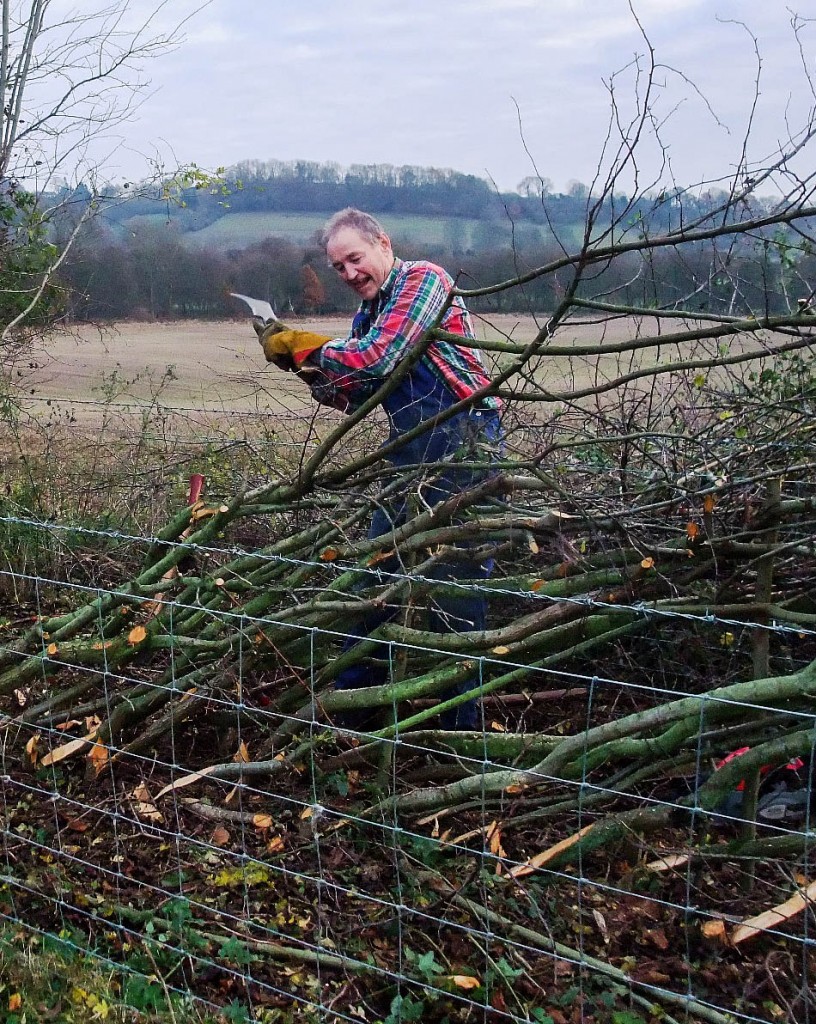National park bosses have handed out grants to farmers and landowners to restore traditional hedgerows and drystone walls in their area.
North York Moors National Park Authority has given more than £60,000 from its traditional boundary scheme and habitat connectivity programme.
The grants enabled the restoration of more than 2,600 sq metres of stone walling and the planting of 2.3km of hedgerow. 560m of existing hedgerow will also be coppiced and laid.
The authority said hedgelaying is traditionally carried out in autumn and winter when the plants are dormant. Importantly this also avoids the bird nesting season.
“A country craft which has been widely practised for hundreds of years across Europe, hedgelaying has largely disappeared apart from in a handful of countries including the UK,” an authority spokesperson said. “It involves partially cutting through the upright stems of shrubs, bending them down and weaving them around stakes driven into the line of the hedge.
“There are around 10 different regional styles of hedgelaying within the UK including a ‘Yorkshire style’ which is traditionally very narrow, laid flattish and no more than three foot in height.”
David Perry from Robin Hood’s Bay carried out the hedgelaying at Low Askew Farm near Cropton. He also restores drystone walls. He explained that, 30 years ago, hedgelayers were something of a dying breed but that now, thanks to grants like the TBS and increased environmental awareness of landowners, there has been a renewed interest in hedgelaying.
“Many farmers and landowners recognise the wildlife benefits and the shelter for stock that a well maintained hedge provides,” he said. “Hedges act as wildlife corridors for a range of birds and animals that will not normally cross expanses of open land, provide nesting sites for birds and are an important food source for many creatures.
“In addition, the wall and the hedge are an underpinning visual characteristic of the landscape of the British Isles.
“I love what I do. Every new job takes me to a different area, often to places I’ve not visited or spent time in before and I get to be out in the countryside observing wildlife – for example I’ve watched buzzards at Low Askew almost every day. I’m supposed to retire next year, but I can’t see me giving up my final career unless forced to by infirmity.”
Martin Dawson-Brown received the grant to assist in laying 194 metres of mixed hedgerow at Low Askew Farm. The hedge which includes hawthorn, wild rose, field maple, wild pear and honeysuckle, was planted in 2001 on the site of a much older boundary.
He said: “The hedge is not covered by our stewardship agreement but we feel it is a key feature of the farm so were very pleased to get the grant from the national park authority. It is one of a number of hedges we have planted over the years – all with wildlife in mind by choosing species that produce berries for birds.”
Brian Hope of High House Farm near Sutton Bank received funding over the past two years to restore 260m of drystone wall. He said: “Getting the grant has transformed a dilapidated eyesore into a good secure boundary for our stock. The wall is very visible from the road and a footpath and we’ve had several walkers remark on how nice it looks.”
Despite cuts to its funding, the national park authority said it is hoping to offer the grants again next year to help with the cost of rebuilding drystone walls and planting or restoring hedges that are unlikely to be restored under existing agri-environment schemes.
Kirsty Brown, conservation project assistant at the North York Moors National Park Authority who looks after the TBS, said: “Various drystone walls in the national park are believed to go back to the Iron Age or earlier, with some on the coast being noted from Viking times, while some of our hedgerows are remnants of ancient woodland margins.
“In addition to supporting our local farms and benefitting wildlife, upkeeping our walls and hedges has an economic element too in making the area more appealing to visitors. The national park authority is keen therefore to do what it can to continue to support these traditional boundaries.”
